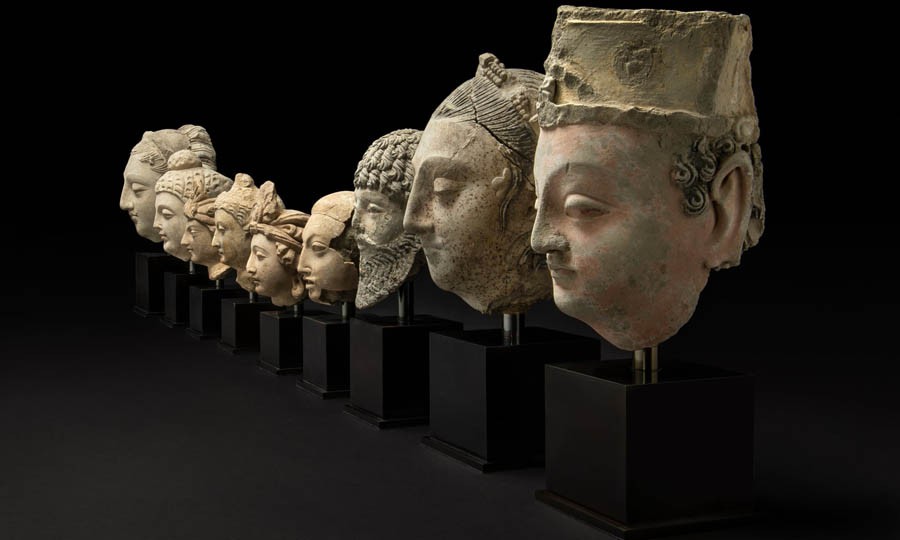
Will the decision of the British Museum to return artefacts to the Afghan government undo injustices of history?

It will be retribution of sorts for those who believe that injustices in history can be addressed and sometimes redeemed. One way of doing it, and it is becoming increasingly kosher, is to return artefacts that found their way into museums and art galleries in the Western world. It has just been announced that the British Museum is to return to the Afghan government nine sculptural heads of the Buddhist-Gandhara era that had landed in its custody after being looted from Afghanistan during the course of the last few decades.
This debate may have generated more heat in this part of the world after the candid, though unguarded, remarks of the prime minister about the booty of the Ghazvas. Certain religious lobbies have been quick to point to the difference between "maal-e-ghanimat" and "loot maar".
But can the injustices of history be reversed and the guilt assuaged? In the past, let us say 60 odd years, the accumulation of riches (material, cultural, intellectual) by the erstwhile European colonial powers has been questioned. The focus has been on the demand from the rest of the world for these to be returned or repatriated from where they were stolen, purchased or seized.
When the Romans were on ascent, after the power of the Greeks had waned, they made sure that city-states, including the capital Athens, were plundered. Being an aspiring imperial power, Rome wanted to outdo Athens in its days of glory. The Romans carried whole sculptures, even building blocks, to adorn Rome. They made bad copies of many of the iconic artworks of the Greeks, which could not be hauled or had been destroyed, and proudly displayed them in their own centres of power without batting an eyelid about loot or poor imitation. Victory instilled in them such confidence that their acts defined what was right or wrong.
Closer to home, one is surprised the Buddhist sculptures survived, mostly in original shape -- because reportedly, these were from the period when the Buddhists ruled parts of what is now known as Pakistan and Afghanistan. We all know that Buddhism was a predominant religion of the area. It was later over taken by the more stringent faith that evolved into Hinduism. On one side were the Zorastrians and on the other, Hindus. In their zealotry, Hindus rooted out the religious imprint of Buddhism from the subcontinent.
But it appears that the Buddhists proved more resilient in the area that is now Afghanistan. It was left to the Arabs that had been conquering Iranian territories to put an end to the era. Hundreds of monasteries were destroyed. The attitude of the invaders to idols of the conquered people was a subject of conjecture. Given the logic of their invasion and expansion, they must have smashed and broken them to bits a religious obligation. And if these survived, one had to know the reason for it -- was it the spirit of coexistence or tolerance or the entrepreneurial scheme of some to palm these off for profit to people within the area or other lands? At about the same time or a little later, one of our heroes, Mahmud from his capital Ghazni, the territories associated with Gandhara, swept down the land that now constitutes Pakistan a number of times. He appointed Ayaz, his favourite slave, as governor of Lahore.
But he is touted more for his attack further down at Somnath as the greatest feat he is supposed to have achieved -- the smashing of the idols. It is also said that he plundered the temples and carried the booty with him for his own land and people. In the process, he also pillaged the Qarmantians who ruled the area. The Ghaznavid empire must have been the beneficiary of the spoils of war.
One is not that aware of the loot and plunder by the Mongols during their ferocious campaigns and the utterly bloody execution of the "farmans" of Emir Taimur. One wonders what happened to all the riches that were looted and hauled across the frontier into Iran after Nadir Shah’s invasion or the treasures that helped in forming the present state of Afghanistan after a series of raids and more thought-out campaigns by Ahmed Shah Abdali in the 18th century.
One obvious reason why the heritage and artefacts are demanded back is because they exist. They adorned various art galleries and museums and seemed well-preserved. So, they become objects that need to be shipped back to the place of their origins. Had these not been well-preserved or had these been lost to history or modified, mutilated or partially destroyed or well into the process of decay, would they still be demanded back?
Are we only more sensitive about recent past and want retribution of sorts? Are we not bothered about more distant eras because the recollection is hazier and the plunder more difficult to reconstruct? The treasures or the artefacts associated with the distant past do not exist in their original form and have been destroyed or melted or smelted into various other forms, architectural, visual art or sculpture, so that it becomes impossible to trace them back to their pristine forms.